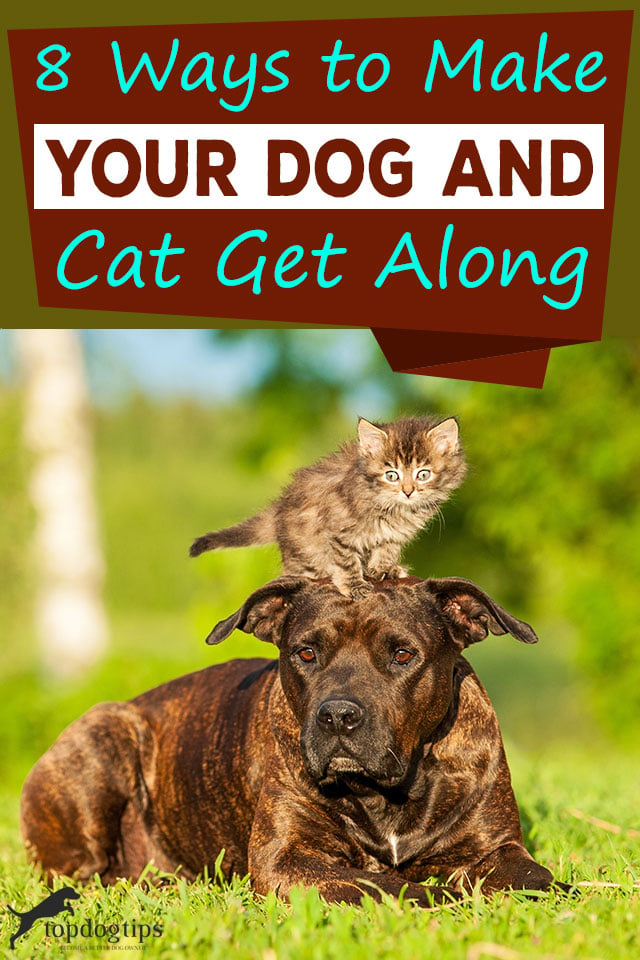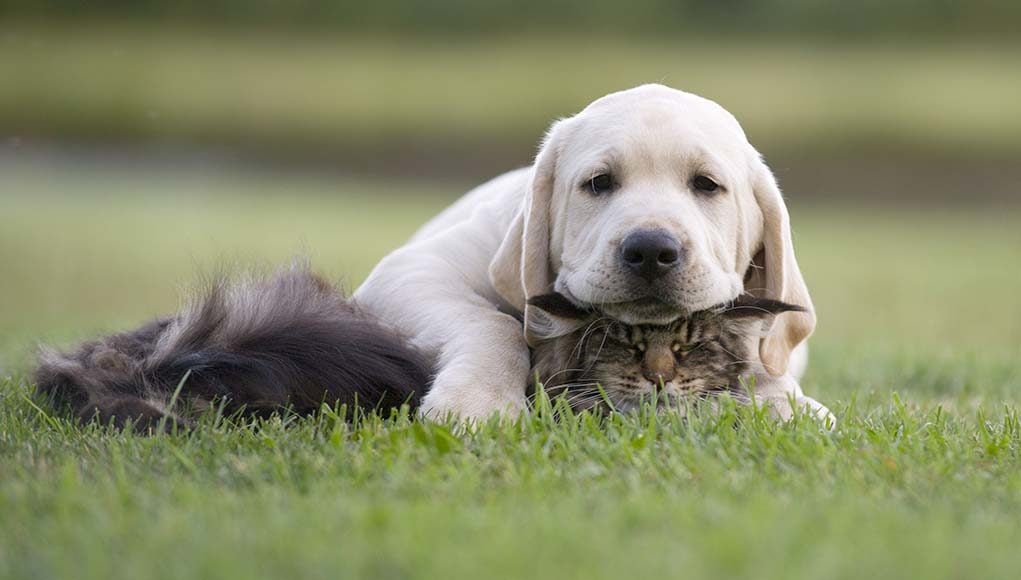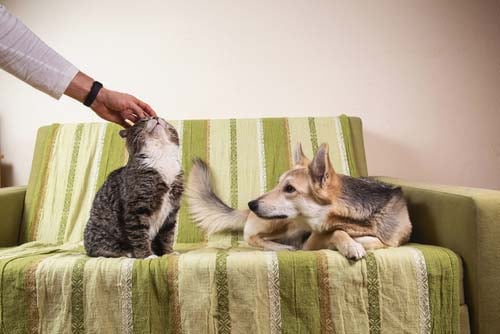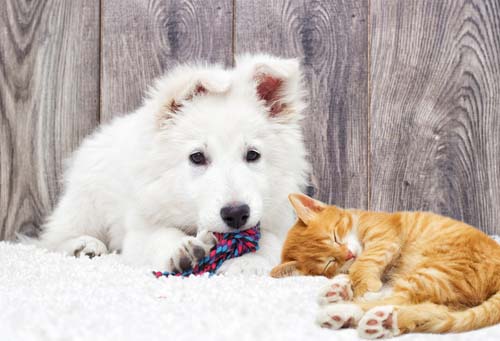A household with multiple pets can be a challenging feat, especially if they are different species. Cats and dogs notoriously don’t get along, but is it a lost cause? Fortunately, living with both dogs and cats doesn’t necessarily have to turn into a war zone. Here are a few tips that will help everyone get along.
Table of Contents
1. Raise Them Together
If you don’t already have a pet, and would like to adopt both a cat and a dog, the smartest thing to do would be to get both at the same time – as babies.
Cats, although physically smaller, need to feel in control of the situation, which is much easier when the dog is still very young. Not only are dogs physically less capable of harming a cat when they are puppies, they are also less aggressive and more open to learning.
When you already have one animal in the household, your chances of success are higher if the new arrival is younger and of the opposite sex.
2. Choose Carefully
Your selection process should consist of two parts. The first part is to do your research about potential breeds. Some breeds, like Labradors, Retrievers, Beagles and Bichons get along great with cats, while others, like Huskeys, most Terriers and Afghan Hounds are generally not a safe choice. In general, hunting and herding breeds are best avoided if you’re adding a dog to your previously cat-only family due to their high prey drive.
Once you’ve selected the breed (or narrowed it down to a few potential ones), it’s time to focus on the personality of the animals. If either the cat or the dog are aggressive, or particularly territorial, they probably won’t take kindly to a new addition. Your pets should be similar in age and energy levels. Animals that have already lived with other species should have an easier time adapting.
3. Give Your Dog Proper Training
The integration process should be much easier if the dog is obedient. He should be trained to follow basic commands. One of the most important commands to train for is emergency recall – which should be able to override even the frenzy and aggression of a fight.
Basic commands such as “sit” and “stay” are a must. “Leave it” is one that might come in handy if your dog shows an interest in the cat’s litter box.
4. Before Formal Introductions
Before you introduce the new family member, make sure that he is clean and healthy. Take the new animal for an appointment with a vet where he will get all the necessary vaccines and checked for any illnesses and parasites. Once you’re sure he’s okay to bring home, it’s best to keep the animals separate for a few days.
Each pet should have their own space. Keep one closed while you let the other explore and roam the house for a period of time, then switch. This way, each animal will have time to get familiarized with the other one’s scent before meeting face to face.
Sniffing should include the other animal’s bed and toys. Letting them smell each other through a closed door during meals is a good final step before meeting face to face: it will help give the new scent a positive association.
5. Set Them Up for a Successful Relationship
The first meeting between your cat and dog should happen when your dog is on a leash. The cat will likely hiss, and she might even swat him on the nose a little – this is normal, and might even be a good step towards the cat asserting its dominance.
If the dog starts towards the cat or exhibits aggressive behavior, invoke his training, with commands such as “sit” and “stay”. Reinforce positive behavior with treats. Even if both animals are calm, keep the dog on a leash for at least an hour. If there are no incidents during that time, you can let him off, but be prepared to react swiftly should he attack the cat.
6. Don’t Feed Jealousy
If you already have one pet, you might accidentally set yourself up for failure out of anxiety, excitement or a sense of guilt. Giving your pet extra attention before getting a new pet, then turning the attention to the new animal once they arrive is the most common mistake pet owners make, and it leads instantly to jealousy.
This kind of behavior makes the animal associate the new pet with the loss of your love and attention. As hard as it might seem, try to act the same as usual before the new pet arrives, and then once he does, give your old pet some extra loving to make the experience less traumatic for him.
7. Give Them Their Own Space/Territory
Both cats and dogs are territorial animals, and the best way to avoid fights is to give each his own little kingdom. This means that you need to provide each with a private space where they can eat, sleep or just retreat when they want to be alone, without being disturbed.
Train each of them not to touch the other’s food and toys, as this is one of the most common causes of fights. Regularly scheduled meal times and no free feeding help keep the order too. Cats love having a lot of space, and the safest way to give it to them is to use tall places that the dog can’t reach: think plenty of shelves, cat trees and other easily climbable surfaces.
8. Keep Them Occupied
A lot of fights and chasing comes from excessive energy. Most dogs don’t get enough exercise and stimulation. Instead of having them satisfy those needs by chasing the cat, make sure you tire your puppy out through more adequate activities like long walks, runs, and high-intensity training.
Playing herding games with your pooch regularly should satisfy his natural instincts, so he won’t feel the need to “herd” the cat.
Just like with people, the relationship between a cat and a dog depends largely on the first impression. Careful preparation will help it go smoothly and prevent further problems.
READ NEXT: 10 Tips for Introducing a New Dog to Resident Pets
Want To Share This?


















